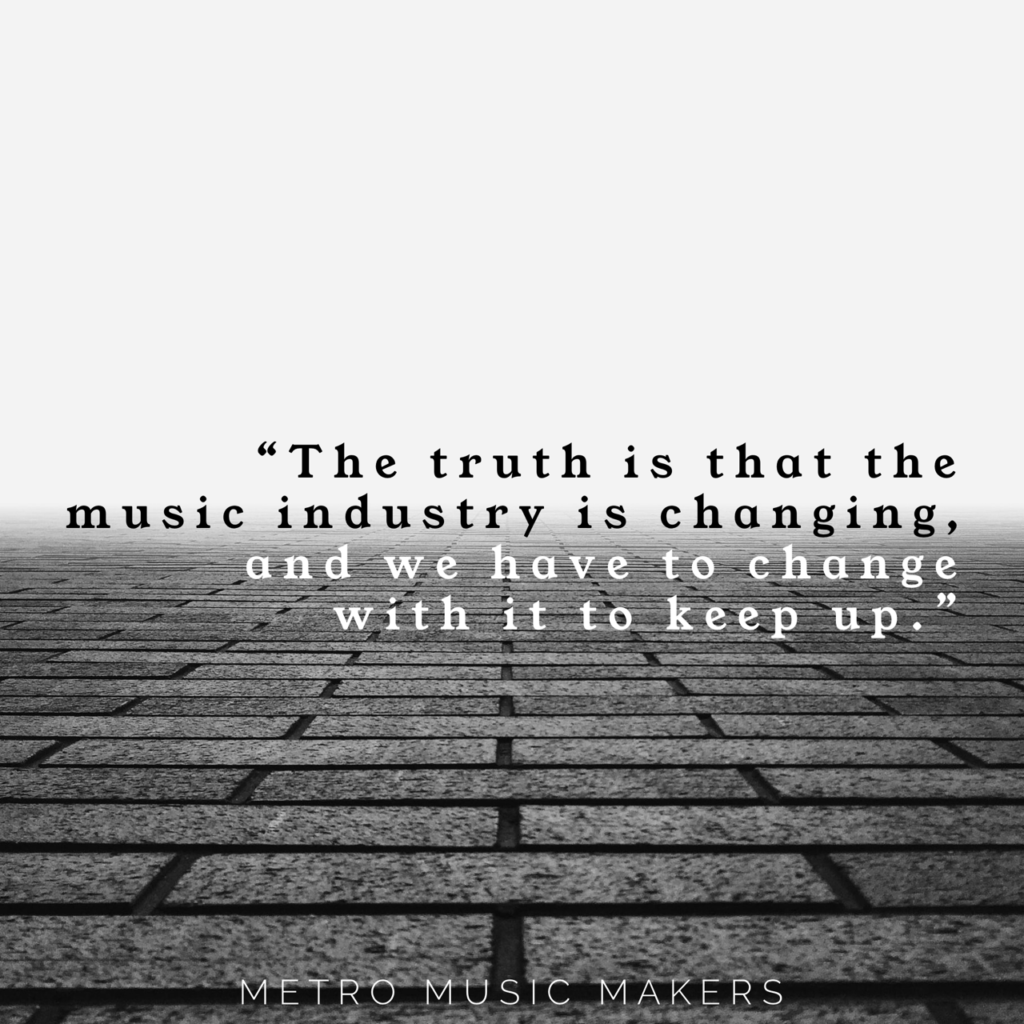Written by Metro Music Makers instructor J.T. Lee
I’ve been teaching lessons for about 10 years now. But ever since I’ve started, I’ve never been interested in the lessons-as-usual kind of lessons. I’ve always tried to do whatever I could to keep my lessons fun and interesting, but lately I’ve embraced some even bigger changes to reach my students. The truth is that the music industry is changing, and we have to change with it to keep it up. There are a few things that are helping me in my pursuit of being an industry-forward music teacher.

1. Teach the practical, along with the traditional.
As teachers, we often teach the way we learned. We learned from teachers who likely learned from teachers who always taught the same thing the same way. Let me say this first: there absolutely is value in tradition. However, when we aren’t willing to flex with tradition, we can sometimes limit the growth of our students. So how do we maintain the right balance as teachers?
We have to learn what’s really needed in today’s industry and teach the traditional with the real world in mind. This can be done in a number of ways. An example from my personal studio is that I teach chording on piano at the beginning stages. I usually teach them their first four-chord jam somewhere in the 1B level. I also teach them to play “Superstition” by Stevie Wonder before they leave the black key introduction in most piano books. Why? Because the mechanics can be used to allow students to play pop style songs they hear on the radio, which helps many get over that tween and teen stage where they want to quit playing. In fact, one of the most frequent compliments I hear at recitals is that parents are so happy that their student played something everyone recognized.
Here are some other recommendations for practical teaching:
- Piano: Opt for using lead sheets in addition to standard repertoire sheet music , so students can learn to self-accompany.
- Guitar: Focus less on songs and more on theory at earlier stages. You can also try to force neck memorization pretty early to bridge communication gaps.
- Bass: Consider moving students to a synth bass for at least a little bit just to get them the experience, as it is called for in many of today’s modern mediums of music.
2. Teach with tech, and teach tech.
We are in an age of rapid technological growth. In order to keep up with an ever-changing generation, we have to take advantage of the technology available to us. I suggest finding a few music game apps for your younger students (Staff Wars and Piano Dust Buster are a couple of good options.) They love for music learning to be fun and the idea of stealing extra screen time during their lessons.
For older students, teach sound shaping (via programs like Mainstage) and recording. There are so many free DAWs (digital audio workstations, or recording apps) now, making it really easy to teach your students to record. Recording can be a tool used for personal musical growth or even creation. I have students that study music production, just as others study songwriting or improv. Use of these software programs has really become another musical voice, much like the piano or guitar.
At the end of the day, our job is to teach music— all of the aspects of music.
3. Teach to build a relationship.
I’m in this career to build relationships that leave an impact on the future of music. I teach industry-forward skills so that my students can go further than I ever could and leave a bigger mark than I ever will.
Lessons for me open the doors to inspire and encourage the next generation of Dylans, Parkers, Kanyes and Swifts. We have to teach with the belief that our relationships to these students matter, even when it may not feel like it. So look ahead. Track your challenging times of the year, and come into lessons with new ideas to shake it up and change it up. This will help keep your students challenged and on their toes while not overwhelming them.
Where are some areas in your teaching where you can dump tradition, embrace technology, or foster relationships in order to encourage some industry-friendly growth?
